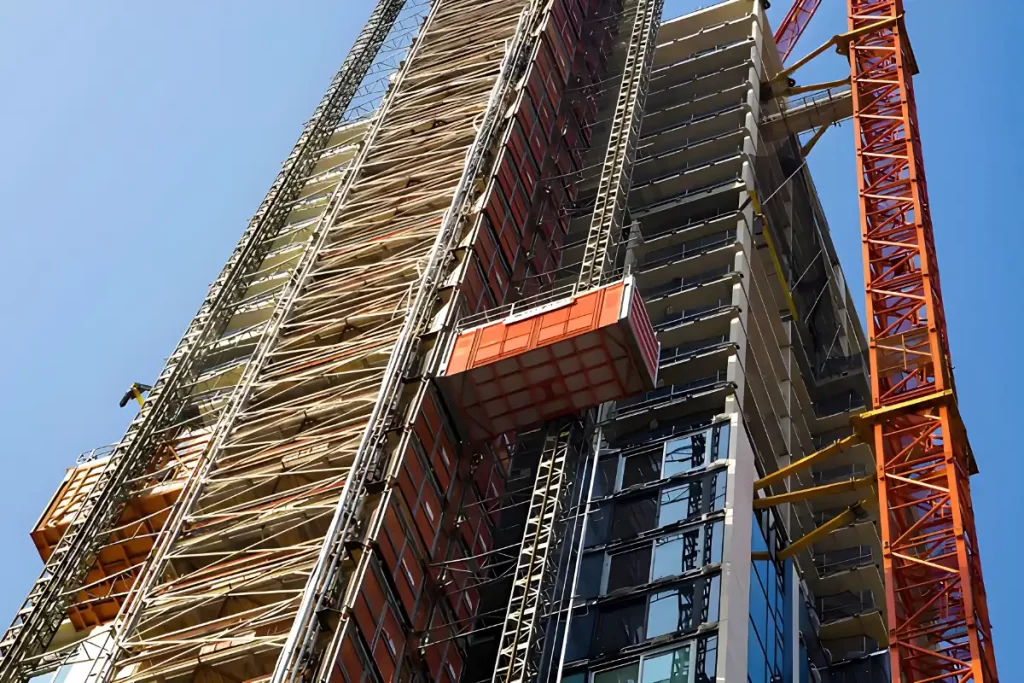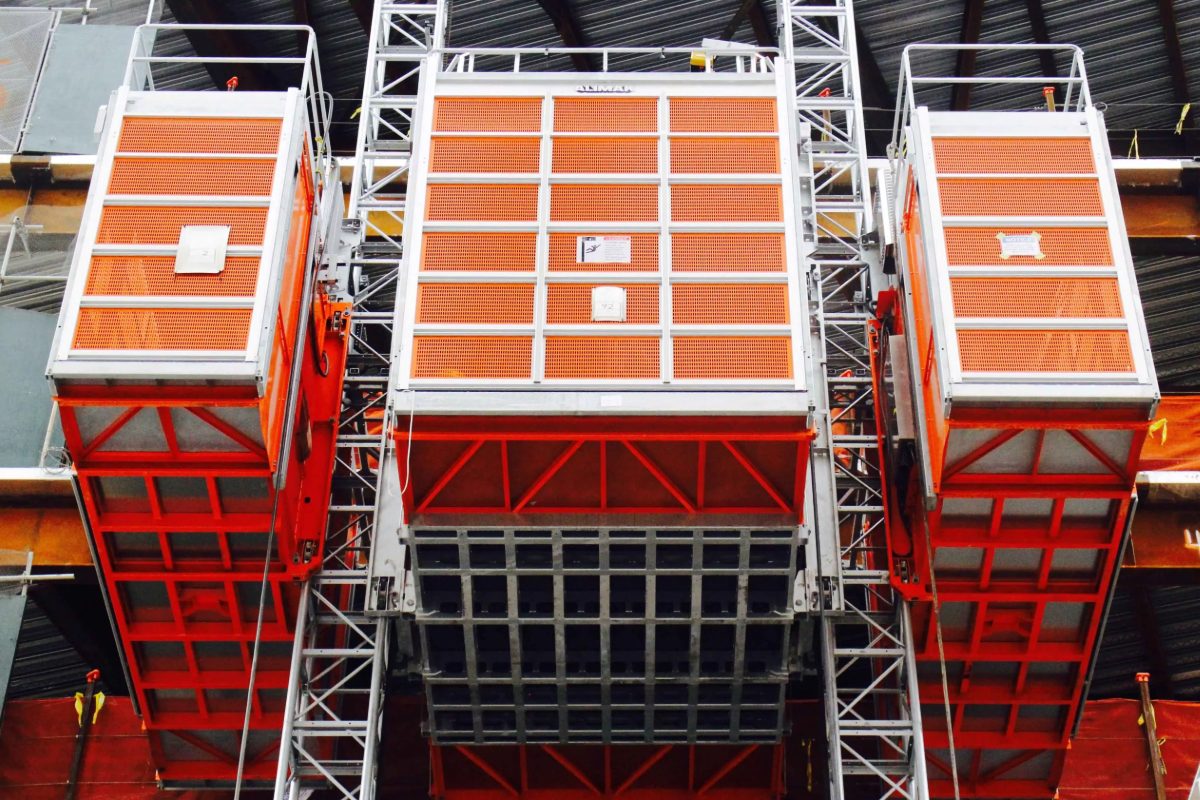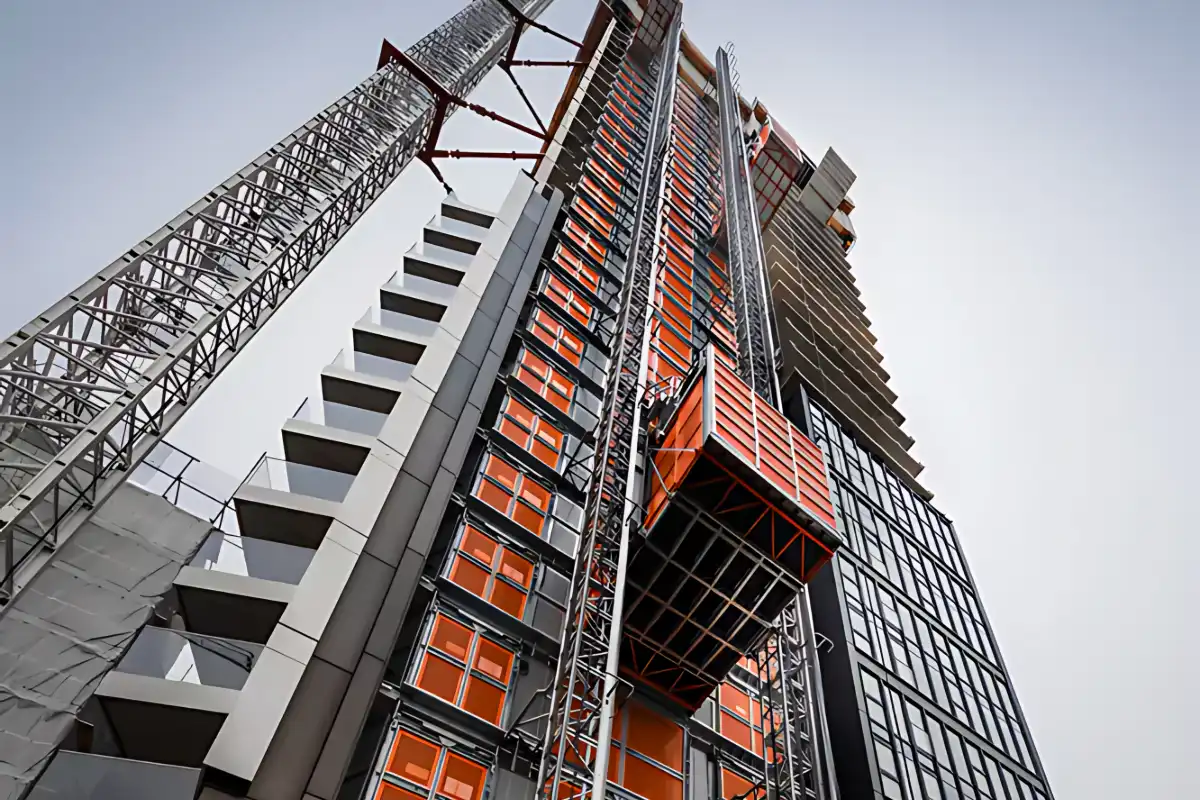
What Equipment Can You Use on a Construction Hoist?
What are the different types of equipment that can be used on a construction hoist?
- Lifting and securing tools
- Heavy equipment
- Construction materials
- Safety gear
- Load-handling accessories
Overview
- Construction hoists significantly enhance efficiency and safety on job sites by enabling the vertical transport of diverse materials and equipment, requiring a clear understanding of suitable tools and loading methods.
- From lifting and securing tools and heavy machinery to handling construction materials and implementing essential safety gear, proper utilization of hoists and load-handling accessories is crucial for optimizing operations and minimizing hazards.
- By recognizing the various types of equipment compatible with construction hoists, construction professionals can maximize productivity and ensure a safer working environment.
Construction hoists are essential for transporting materials and personnel vertically on construction sites. These lifts support various loads, from heavy equipment to building supplies, making them indispensable in large-scale projects. Their ability to enhance efficiency and safety ensures smoother operations in high-rise developments.
To maximize their potential, it’s important to understand what types of equipment you can use on a construction hoist. Different tools and materials require specific weight capacities, loading methods, and safety precautions to ensure proper transport.
In this article, we’ll explore the types of gear suitable for these lifting systems and how to use them effectively on the job site.
Lifting and Securing Tools
Lifting and securing tools are essential in vertical material handling, ensuring the safe and efficient transport of construction loads. These devices stabilize cargo, reduce manual strain, and prevent unwanted shifting during elevation.
Material lifts and vertical transport systems often rely on a mix of rigging gear and hoisting components. Pulleys and sheaves help with maneuverability, while wire ropes and chains offer strong support. Eye bolts and anchor hooks secure equipment to the mast or lift cage, maintaining balance throughout the operation.
Several tools improve both control and efficiency. Shackles link lifting gear to loads, while heavy-duty hooks act as reliable connection points. Spreader bars or lifting beams distribute weight evenly—ideal for managing bulky or heavy items like steel frameworks. Pallet forks facilitate moving stacked goods, and cargo straps keep everything firmly in place during ascent, ensuring each lift is smooth and secure.
Heavy Equipment

Material hoists are crucial for transporting bulky construction items that are unsafe or inefficient to move by hand. These lifts handle heavy loads like steel beams, concrete slabs, machinery parts, and prefabricated units—key components in today’s building projects.
Instead of relying solely on cranes, teams use vertical transport systems to move these materials to higher levels with greater control and less risk. Smaller equipment, such as generators, compactors, or mixers, can also be elevated to where they’re needed, especially in multi-story buildings where manual hauling is impractical.
By incorporating hoists into daily operations, construction crews boost efficiency, reduce handling damage, and maintain safer, more organized worksites, keeping projects on track and on schedule.
Construction Materials
Material lifts are essential for moving bulky supplies vertically, especially in high-rise developments where manual handling isn’t practical or safe. Heavy items like concrete, bricks, lumber, steel, and drywall require mechanical support to ensure smooth, secure transport across multiple floors.
Relying solely on ground-level movement would create bottlenecks and delay progress. Vertical transport systems streamline logistics by delivering materials exactly where they’re needed, maintaining workflow, and keeping projects on track.
By handling core construction materials efficiently, these lifting platforms enhance productivity, reduce strain on workers, and uphold job site safety in large-scale builds.
Safety Gear

Safety gear is a critical component of construction hoist operations, protecting workers from falls, falling objects, and other job site risks, thus fostering a safer work environment.
Since hoists operate at significant heights, fall prevention is paramount. Safety harnesses, lanyards, and tie-off points secure workers, while guardrails and toe boards enhance stability. Safety nets are sometimes used around hoists to catch debris or prevent serious injuries.
Other safety gear helps mitigate common construction site hazards. Hard hats minimize the impact of falling objects, while safety glasses or goggles protect against dust and debris. Safety gloves reduce the risk of cuts and abrasions, and high-visibility clothing improves worker visibility. Steel-toed boots provide essential foot protection against heavy materials and equipment.
Load-handling Accessories
Load-handling accessories are vital to construction hoist systems, ensuring the safe and efficient vertical transport of materials. These tools aid in stabilizing loads, preventing movement, and enhancing precision during vertical movement.
Construction materials frequently vary in size, shape, and weight. Without appropriate accessories, transporting irregular or heavy loads can be hazardous. Slings, chains, and spreader beams help distribute weight evenly, reducing stress on the hoist and preventing imbalances that could lead to accidents or material damage.
To further enhance stability, hoists utilize specialized accessories. Material buckets efficiently move bulk materials like concrete or debris, while load binders secure chains or straps to stabilize loads. Turnbuckles adjust tension, ensuring a firm hold during lifting. Cargo straps prevent shifting, and sheet lifters support large panels for safer handling.
Key Takeaway
There are many ways that hoists can help personnel and operations at a construction site. By understanding the type of equipment you can use on a construction hoist, you can optimize productivity while also significantly enhancing safety and reducing potential hazards.
Find quality construction hoists at Multico Prime Power. We provide reliable equipment designed for safety and efficiency on your job site. Contact us today to discuss your lifting and equipment needs.



